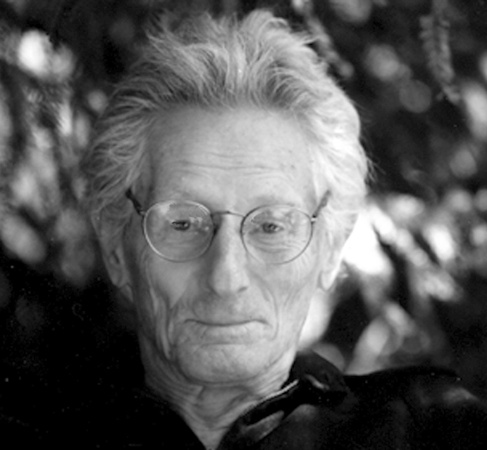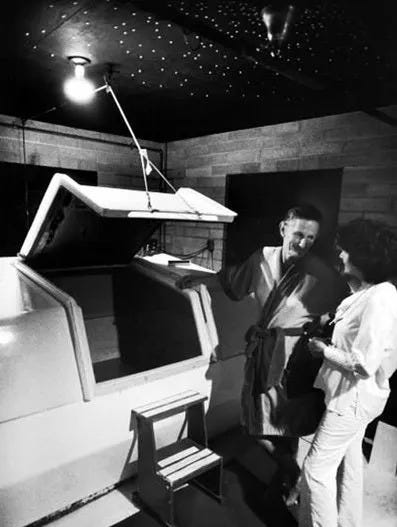From Cosmic Consciousness to Mind Expansion with Sensory Tanks
Discover how sensory deprivation tanks tap into consciousness and unlock the mind's hidden potential. Explore Dr. John Lilly's groundbreaking discoveries today.
Have you ever wondered what lies beyond the limits of ordinary perception? What if our minds held untapped potential to access deeper layers of existence? These were the questions a daring scientist grappled with in 1954, leading to an invention that redefined the quest for consciousness exploration—the sensory deprivation tank.
Dr. John C. Lilly, a researcher with an insatiable curiosity for the nature of mind and self, plunged into uncharted territory with one groundbreaking goal in mind: to uncover the vast landscapes of human consciousness. What he discovered within the complete silence and darkness of his tank was unprecedented, mesmerizing, and for some organizations—like the CIA—absolutely concerning.
Who Was Dr. John C. Lilly?
Dr. John C. Lilly was no ordinary scientist. Born in 1915, Lilly brought an interdisciplinary approach to science—melding neurology, psychology, biophysics, and philosophy. He was fascinated by the vastness of human potential and the untapped powers of the mind.
His interests led him to study how the environment influences human awareness. This culminated in 1954, when Lilly created an apparatus that would forever change the way we think about perception and consciousness—the sensory deprivation tank.
The story of the sensory deprivation tank is not just one of scientific innovation. It’s a gateway narrative to uncovering the power of the human mind.
1954: The Experiment That "Turned Off" Reality
Dr. John C. Lilly was no ordinary scientist. With a background in neurophysiology and a passion for exploring human consciousness, Lilly built what might sound like a tool of science fiction—a sensory deprivation tank. The sensory deprivation tank—sometimes referred to as a “float tank”—is an enclosed chamber filled with body-temperature salt water, designed to eliminate external sensory input. No light. No sound. Zero contact with the outside world.
Imagine floating weightlessly in complete darkness. The water's salinity keeps you suspended, removing the sensation of gravity. With no external distractions, you're left alone with your thoughts, stripped of the stimuli that define our everyday experiences.
But what Lilly uncovered in this environment went far beyond relaxation or meditation. Lilly wanted to see what would happen if the mind was freed from the distractions of external stimuli. Could it expand beyond its normal boundaries? Could it access a realm of higher understanding?
Immersed in the tank for hours at a time, Lilly’s experiments shifted beyond mere science. His mind began to drift—a sensation of floating in time and space, untethered. He described a connection to what he called “the province of the Mind.” Here, the boundaries of self dissolved, and what remained was pure awareness.
The First Journeys into the "Province of the Mind"
During his first hours in the tank, Lilly noticed something incredible. His mind began to expand outward. Time became elastic, losing the rigid structure we rely on.
With the boundaries of his “self” dissolving, he experienced what he later referred to as "cosmic consciousness." A state of pure awareness emerged—untangled from physical limitations—and a sense of connection to the universe as a whole.
Lilly described it as entering “the province of the Mind”—a realm of existence within the human psyche that science, at that time, didn’t fully understand.
But Lilly’s discovery wasn’t just groundbreaking—it was otherworldly. When the CIA found out, they saw a different opportunity altogether.
The CIA and the Weaponization of Consciousness
Lilly’s work didn’t stay underground for long. The CIA caught wind of his experiments and quickly realized the potential applications of altered states of consciousness. They funded Lilly’s research, but their goal wasn’t peaceful exploration—it was control. How might altered states of consciousness be weaponized?
Despite external pressures, Lilly remained steadfast in his mission. His quest was about understanding human potential, not manipulating it. To push the limits further, Lilly began combining sensory deprivation with psychedelics. The results were jaw-dropping.
Inside the tank, Lilly tapped into what he called "cosmic consciousness." He described accessing other dimensions, communicating with different species, and experiencing his mind stretching beyond the physical world. The sensory deprivation tank became more than an experiment; it was, in Lilly’s words, a "gateway" to uncharted realms of the human experience.
Still, this introspection wasn’t without risks. Many who followed in Lilly’s footsteps reported profound revelations, but some also faced fears and traumas they had long buried. Were these tanks a path to enlightenment, or did they unearth parts of us that we’re not yet ready to confront?
How Lilly’s Work Shaped Modern Healing and Exploration
Fast forward more than 50 years, and Lilly’s invention has gone mainstream. Sensory deprivation tanks are used in therapy, mindfulness practices, and even as tools for exploring personal identity. Lilly’s work inspired the fields of lucid dreaming, astral projection, and deep meditative exploration.
But for most people, floating in the tank isn’t necessarily about cosmic journeys. Instead, it’s about calmness, clarity, and neural rewiring. Meanwhile Lilly, eager to push the limits of understanding human consciousness, began combining sensory isolation with psychedelics like LSD. The combination proved revolutionary (and controversial).
Inside the tank, under the influence of psychedelics, Lilly reported entering realms of experience beyond comprehension. He described communication with non-human entities, traversing alternate dimensions, and experiencing what he called the “universal mind.”
Modern neuroscience confirms that sensory deprivation encourages the brain to enter a theta state, enhances neuroplasticity, and creates access to deep consciousness.
People who use the tank today experience benefits like reduced stress, heightened focus, creativity bursts, and, in some cases, profound personal breakthroughs. Whether regarded as profound or outlandish, these journeys inspired countless explorers of consciousness while sparking heated debates in the scientific community.
Yet, Lilly's work reminds us that this isn’t always comfortable. Many tank users have shared stories of confronting long-buried fears, experiencing visions of rebirth, or grappling with parts of themselves they’ve ignored for years.
Joe Rogan, a modern champion of mindfulness, has often credited float tanks for helping him connect with deeper states of consciousness. On his podcast, Rogan speaks openly about his float tank experiences, echoing Lilly’s ethos that “the real growth happens when we face ourselves.”
Lilly’s legacy is far more than just a new wellness trend. His findings continue to challenge us to consider the untapped potential of the mind.
Lessons from the Tank: What It Means for Us Today
Dr. Lilly’s story isn’t just about extraordinary discoveries—it’s a spark, motivating us to reflect on our own consciousness journeys. Here are three of the most valuable takeaways from his work, and what they mean for us today:
1. The Mind Has Untapped Potential
Lilly’s experiments revealed that our consciousness extends far beyond the boundaries of everyday awareness. By exploring altered states, whether through meditation, mindfulness, or tools like the sensory deprivation tank, we unlock deeper creativity, enhanced focus, and insights that feel nothing short of magical.
Most of us merely scratch the surface of what our minds are capable of. Imagine what could happen if you allowed yourself to explore the untapped potential waiting within.
2. True Growth Requires Self-Reflection
One remarkable observation from sensory isolation is that it doesn’t just offer peace—it demands you confront your inner self. For those floating in darkness and silence, hidden fears, unprocessed traumas, and buried emotions often surface.
Lilly taught us that growth isn’t possible without facing these overlooked parts of ourselves. Whether in a tank, through mindful solitude, or with self-inquiry, stepping into silence can foster deep self-awareness and transformation.
3. Connection Begins Within
Lilly believed that peace and connection begin with self-acceptance. The journey inward shows us not only who we are, but how we relate to others and to the universe. He discovered clarity in isolation and brought those insights into his interactions with the world.
When we align with ourselves, we foster more meaningful relationships, deeper empathy, and ultimately, a richer human experience.
Why This Matters
Dr. John C. Lilly’s sensory deprivation tank wasn’t just an experiment—it was a doorway to expanded consciousness. It showed us that silence is not the absence of reality but the gateway to a richer one.
What Lilly uncovered decades ago still applies today. Whether we sit in isolation, meditate, or use a sensory deprivation tank, the path to extraordinary growth begins with a single, simple step inside ourselves.
The question now is, will you take that step? What could you discover in the province of your mind?





